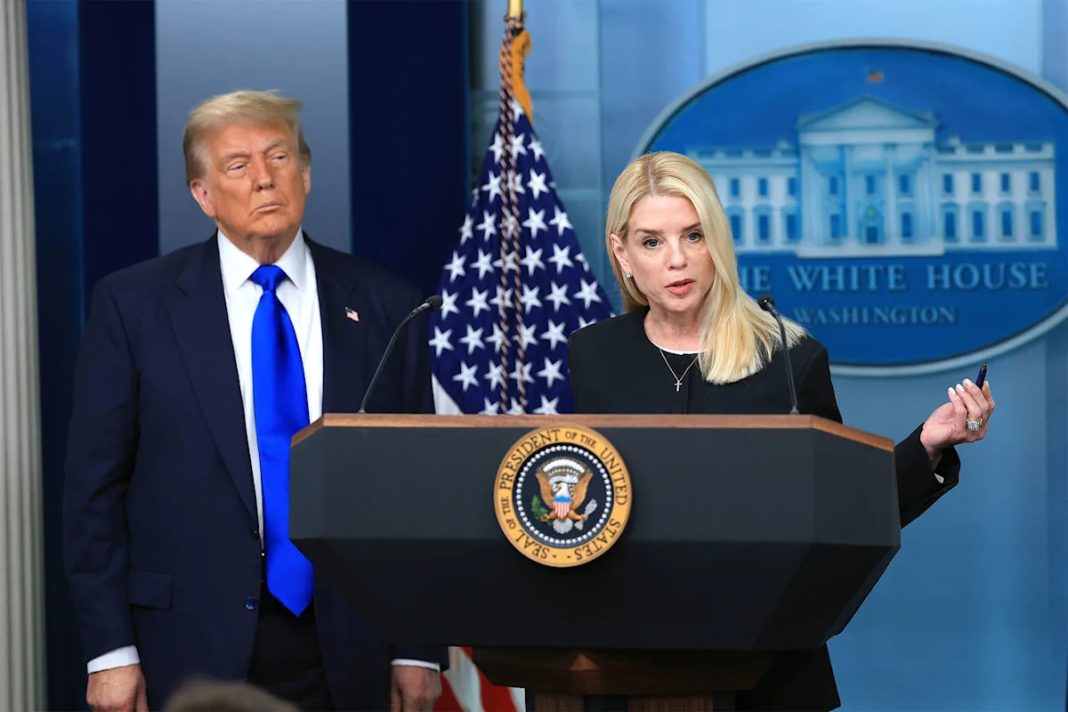It was one of the most controversial presidential statements ever published to social media. Three weeks ago, Donald Trump posted an item to his own platform, directing Attorney General Pam Bondi to go after three of the president’s perceived political enemies: Former FBI Director James Comey, Democratic Sen. Adam Schiff of California and New York Attorney General Letitia James.
Despite Trump officials’ continued insistence that they’ve put an end to “weaponization,” Trump sketched out a brazenly corrupt and overtly authoritarian scheme in which he expected the Justice Department to quickly pursue criminal cases against his foes — whom he said were “guilty as hell” of unidentified crimes.
Concluding that “they” impeached him and tried to hold him accountable for a variety of alleged felonies, the Republican concluded that he’s desperate to turn the tables on his enemies. “JUSTICE MUST BE SERVED, NOW!!!” he wrote.
The online directive was, for all intents and purposes, a confession in which he freely acknowledged his intent. “Yes, I admit that I’m pressuring my attorney general to prosecute my political foes,” the president effectively declared. “And I’d prefer it if she hurried up and satisfied my hunger for revenge sooner rather than later.”
At the time, there was some speculation, however, about whether the public was supposed to see the message. Did Trump deliberately publish the item for public consumption, or was the post (which began “Pam:” — as if he were communicating directly to the attorney general) intended to be a direct message?
An answer is coming into focus. The Wall Street Journal, citing unnamed officials, reported this week:
On Sept. 20, Trump meant to send a private message to Attorney General Pam Bondi urging her to prosecute former FBI Director James Comey and his other favored targets, according to U.S. officials familiar with the matter. … Trump believed he had sent Bondi the message directly, addressing it to ‘Pam,’ and was surprised to learn it was public, the officials said.
NBC News had a related report, citing an administration official who confirmed that the president intended the post to be a direct message. “Trump was surprised to learn he had actually posted the message to his Truth Social account, the source said, adding that the president reacted by saying ‘Oh,’ and then tried to shrug it off,” the report added.
The obvious problem is that this constitutes yet another example of rampant incompetence at the White House, but there’s a bit more to this one.
For one thing, the reporting suggests Trump’s private communications with members of his Cabinet are as juvenile and ridiculous as one might fear. It’s tempting to think that the president puts on a blustering show for the cameras but is more measured in private. But if this reporting is correct, the Republican actually tried to DM his attorney general, referring to “‘Shifty’ Schiff” and including all-caps demands with multiple exclamation points.
Similarly, one might expect a president who is eager to execute a corrupt scheme in which the Justice Department targets his enemies, to pick the phone, perhaps, to make his wishes clear. Instead, he apparently intended to use direct messaging via social media.
I can’t speak with authority to the back-end security measures in place on Trump’s platform, but it’s hard not to wonder how many international intelligence agencies are also monitoring the interactions between the president and members of his White House team on Truth Social.
But perhaps most important of all, Comey’s defense attorneys are pushing back against the indictment Trump orchestrated, citing the president’s online message as evidence of vindictive prosecution. Time will tell whether this argument succeeds, but it does open the door to an amazing possibility: The president desperately wanted to see an indictment against the former FBI director, and the dubious case might very well unravel because Trump got confused when trying to use his own social media platform.
This article was originally published on MSNBC.com

